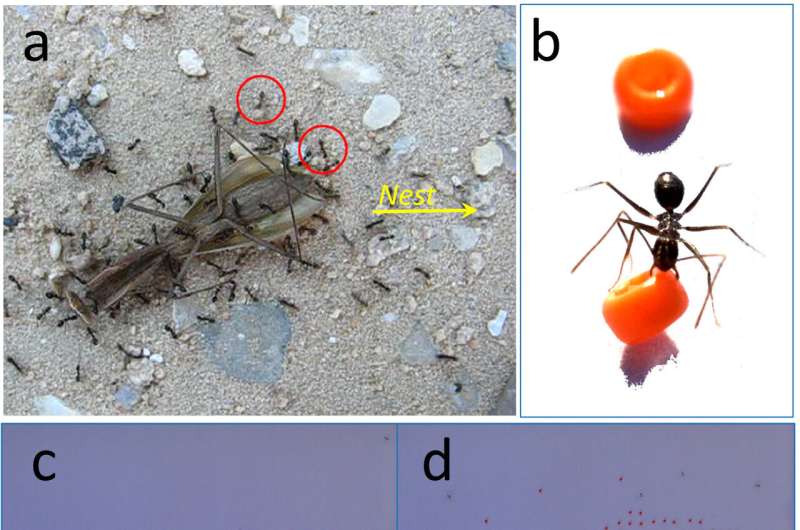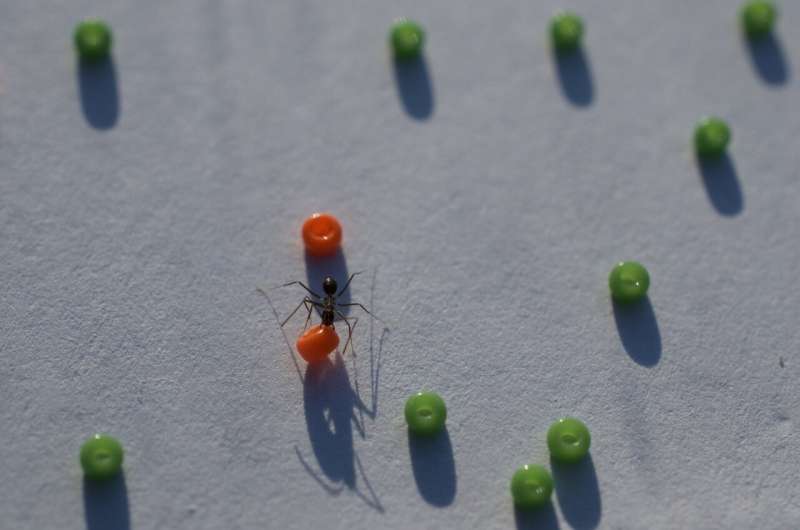
Ever wondered how tiny creatures like ants can display such impressive teamwork? A new study dives into the fascinating world of longhorn crazy ants, revealing how they navigate obstacles while working together. Get ready to be inspired by their remarkable abilities and see how their small brains lead to big achievements!
In the vibrant realm of ants, there exists an astonishing variety of species, each displaying remarkable behaviors. Some manage complex tasks like farming and construction, while others exhibit surprising social dynamics. Surprisingly, the brain of an ant isn’t much larger than a poppy seed, housing only 0.25 to 1 million neurons, especially when compared to the 86 billion neurons found in the human brain.
Recently, researchers from Israel and Switzerland uncovered an incredible phenomenon called “swarm intelligence,” which suggests that even these tiny brains can coordinate to showcase advanced planning. Their findings, detailed in the journal Frontiers in Behavioral Neuroscience, shed light on how ants can prepare pathways before encountering obstacles.
The study’s lead researcher, Dr. Ehud Fonio from the Weizmann Institute of Science in Israel, expressed amazement at their findings. “We observed for the first time that longhorn crazy ants actively clear obstacles from their path before they become an issue, almost as if they can anticipate challenges ahead while cooperating to transport food,” said Dr. Fonio.
Preparing for Success
The researchers stumbled upon this fascinating behavior after observing individual crazy ants using their mandibles to remove small pebbles, paving the way for their fellow workers carrying larger prey.
“Watching ants remove small obstacles seemed almost intentional. They appeared to understand their friends’ struggles and proactively chose to help them,” shared Dr. Ofer Feinerman, one of the study’s authors.
To delve deeper, the team conducted 83 detailed experiments on a single crazy ant supercolony at the Weizmann Institute. They created obstacles using 1.5 mm pebbles and offered tasty cat food pellets for transport, conveniently satisfying the ants’ appetites.
A Chemical Connection
Crazy ants communicate through pheromones, leaving behind tiny scent trails to guide their fellow workers to food sources. Interestingly, the researchers found that these pheromones played a crucial role in the ants’ clearing behavior as well.
When encountering food, ants were most diligent about clearing pebbles lying approximately 40 mm away, all while moving the beads an impressive distance of 50 mm away from their path. One hardworking ant even cleared a whopping 64 pebbles in one go!
This cooperative behavior seemed especially strategic—if food was intact, many ants worked together, often finding themselves stalled by obstacles. However, when food was broken into smaller pieces, it was carried by single workers, sidestepping around the pebbles instead of clearing them.
The researchers discovered that beads were indeed a significant hindrance, as it took approximately 18 times longer for ants to navigate a tunnel filled with pebbles compared to a clear passage. Also surprising was the fact that ants didn’t have to be near food to respond to the pheromones and initiate clearing. Just a single scent marker could trigger them into action!

Collective Wisdom
In a fascinating conclusion, the study revealed that no single ant understands the collective behavior at play; each works based on simple cues from the pheromones left by others. “So, what may seem like intelligent planning is actually a collaborative effort that emerges from individual actions,” remarked Dr. Danielle Mersch, a key researcher in the study.
Dr. Feinerman added, “It’s awe-inspiring how these tiny workers come together without any one of them envisioning the task at hand. Their interactions mimic the way our brains work—simple components creating complex cognitive behaviors!”
For more insights:
Discover how ants engaged in cooperative food transport display anticipatory and goal-directed behaviors arising from collective cognition in the research published in Frontiers in Behavioral Neuroscience (2025). DOI: 10.3389/fnbeh.2025.1533372
If you would like to see similar science posts like this, click here & share this article with your friends!



